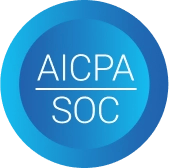There’s no hiding from the fact that SaaS is becoming substantially more expensive with each passing year. To the point where software prices are rising at a rate that is four times faster than general market inflation alone can account for.
But while your SaaS stack may consist of several optional tools that can be rightsized or terminated to reduce outgoings, it’s unlikely that this will apply to your finance applications, given their business-critical nature.
Which leaves you at the mercy of the vendor when it comes to the cost.
Because despite being shrewd negotiators, the unfortunate reality is that finance leaders are no more likely to secure a higher discount for their software than any other department lead.
At least not without the right leverage.
The question is, how can you gain this leverage? And how much could you be saving on the tools within your finance tech stack?
The average real price paid for finance tools is 22% lower than list pricing
When it comes to negotiating the terms of a SaaS contract, finance leaders are among the very best. This is evident in the shrewd estimation and application of license counts, with finance teams utilizing 86% of their licenses – significantly higher than other departments – and with auto-renewal terms, and to a lesser extent pricing auto-increases, more likely to be removed.
Yet despite this, finance teams aren’t securing any better deals on the cost than any other department.
As an example, the average price paid by customers of finance software is 22.2% lower than the list price, which is in-line with discounting in other SaaS categories – slightly less than sales (23.4%) and HR (22.4%), but more than DevOps (21.1%) and marketing (19.6%).
There is, however, some variance between the average discounts afforded by different types of finance tools.
Interestingly, the average price paid for financial planning tools is only 9.6% less than the list prices. In contrast, enterprise resource planning (ERP) platforms are more generous in how much they discount on average (25%).
The important thing to note is that these figures are just that – averages. In some instances, companies are paying up to five times the price others are paying per license for the exact same product.
But while the vast majority of companies will secure a discount of some kind, for many, the savings are minimal. It’s only a select few that are in a position to substantially drive down the cost.
Those with purchasing power.
Why finance vendors tend to hold all the cards in negotiations
The main reason why so many finance leaders are unable to secure the best possible savings on their tools is ultimately because they lack adequate leverage. This means the vendor holds all the cards.
Although many of these companies do of course conduct their own market research and obtain quotes from alternative providers, often prompting a slightly more favorable counter-offer, this approach alone is unlikely to drive notable savings.
At least not the best possible savings.
So, what will?
In short, pricing intel. More specifically, intel into what other similar companies are actually paying for their licenses and subscriptions.
The type of intel that Vertice can provide.
Look beyond your finance software for the biggest cost savings
With finance tools only accounting for 6% of total SaaS spend on average, there’s also a much bigger challenge at play.
While you should absolutely be securing the best possible prices for the tools used within your team, as a finance leader it is also in your interest to ensure that this is the case for every tool being used across the organization. Especially given that these tools represent an even bigger amount of your total SaaS expenditure.
But it’s not just the price per license that you should be looking to reduce. In many instances, there are also huge opportunities to minimize the cost of existing subscriptions, for the simple reason that many departments are contributing to a substantial amount of wasted SaaS spend.
Take sales teams, for example.
According to our data, 52% of sales software licenses are either barely used or not used at all by the intended employee. This in itself is shocking, but what makes it even worse is that these tools account for more than a fifth of total software spend in the average organization.
If there was ever a reason not to let department heads procure their own software, that’s it.
But with SaaS negotiations taking a huge amount of time and effort, not to mention that the average company uses 110 software applications, it’s also not necessarily practical to be handled entirely by finance.
Especially given that companies spend around five hours negotiating each tool.
Which is where Vertice comes in.
Not only do we take the burden of buying, managing and renewing software off your hands, saving you a substantial amount of time, but with access to the pricing and discounting data of more than 13,000 global SaaS vendors, our expert team can secure you the very best deal on any purchase.
See for yourself how much you could be saving on your annual software spend with a free SaaS stack audit, or alternatively search through our extensive vendor database for exclusive pricing insights for thousands of software providers.


